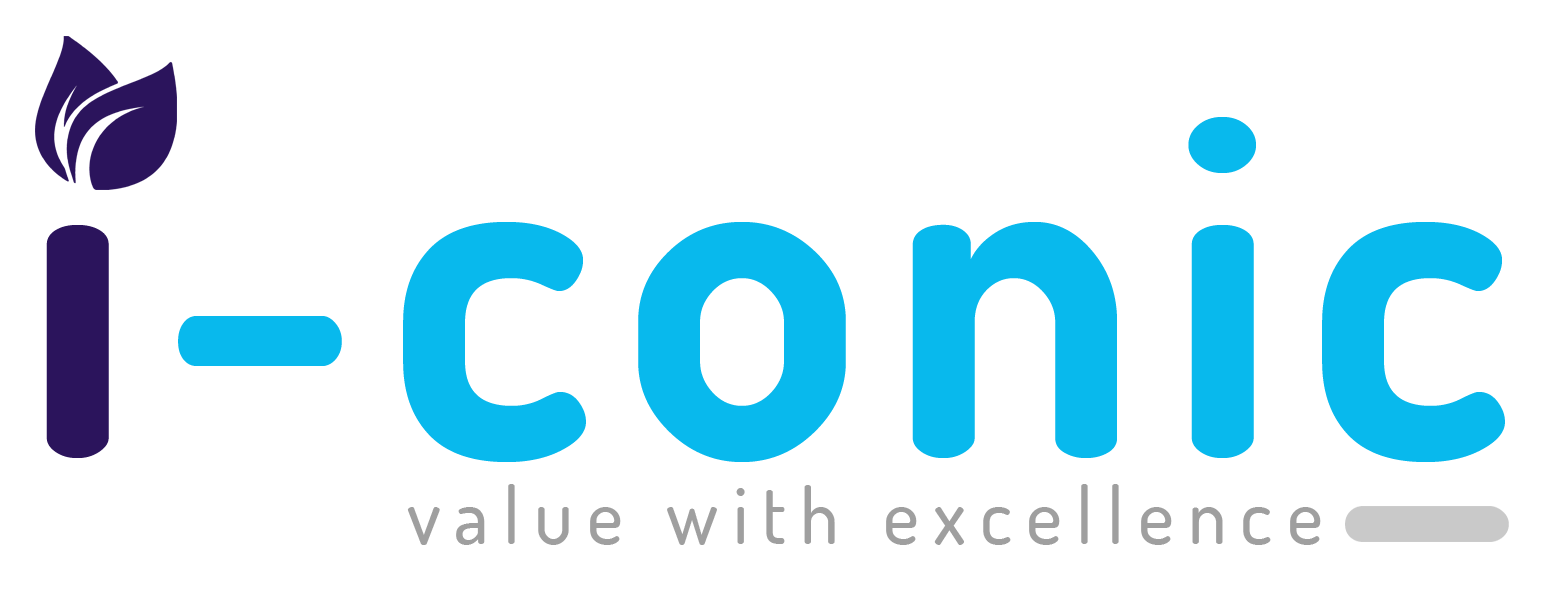Prior authorization has become one of healthcare’s most challenging administrative burdens, consuming enormous resources while creating significant barriers to patient care. The healthcare industry spent $1.3 billion on administrative costs related to prior authorizations last year, while practices complete 39 prior authorization requests per physician, per week. With 89% of physicians believing that the prior authorization process hurts patient clinical outcomes, understanding this complex system has never been more critical for healthcare organizations.
The administrative complexity continues to grow as healthcare moves toward value-based care models and regulatory requirements evolve. For healthcare organizations struggling with prior authorization workflows, professional expertise can make the difference between operational efficiency and administrative chaos.
Understanding Prior Authorization
What is Prior Authorization?
Prior authorization is a cost-control mechanism used by health insurance companies to determine whether they will cover a specific medical service, procedure, or medication before it is provided to a patient. This process requires healthcare providers to obtain approval from the insurance company, demonstrating medical necessity and compliance with coverage criteria.
The primary purposes of prior authorization include:
- Cost Management: Controlling healthcare expenditures by reviewing expensive treatments
- Clinical Appropriateness: Ensuring treatments align with evidence-based guidelines
- Alternative Evaluation: Exploring less expensive treatment options first
- Fraud Prevention: Reducing unnecessary or inappropriate healthcare utilization
However, the reality is more complex. Prior authorization accounts for $35 billion of US healthcare administrative spending, creating a substantial burden for providers while potentially delaying critical patient care.
What Does Prior Authorization Mean for Healthcare Operations?
Prior authorization represents a fundamental shift in healthcare decision-making, where insurance companies insert themselves between physicians and patients in the treatment process. This means healthcare providers must justify their clinical decisions to insurance representatives before proceeding with care.
For healthcare organizations, prior authorization creates several operational challenges:
- Resource Allocation: Dedicating significant staff time to administrative tasks
- Cash Flow Impact: Delayed approvals can postpone revenue realization
- Patient Satisfaction: Treatment delays can negatively affect patient experience
- Provider Frustration: Clinical autonomy concerns and administrative burden
Understanding these implications helps organizations prepare for the operational changes necessary to manage prior authorization effectively. This is where specialized prior authorization services become invaluable for streamlining complex approval processes.
Prior Authorization in Different Healthcare Contexts
What is Prior Authorization in Healthcare vs. Health Insurance?
While often used interchangeably, prior authorization functions differently across healthcare contexts:
Healthcare Perspective:
- Clinical workflow disruption requiring staff coordination
- Documentation requirements for medical necessity
- Provider-patient communication about treatment delays
- Quality assurance and compliance management
Health Insurance Perspective:
- Risk management and cost containment strategy
- Medical policy enforcement and coverage determination
- Claims processing efficiency and fraud prevention
- Member benefit management and utilization review
The intersection of these perspectives creates the complex landscape of prior authorization that healthcare organizations must navigate daily.
What is Prior Authorization in Medical Billing?
From a medical billing standpoint, prior authorization serves as a prerequisite for claim processing and reimbursement. Prior authorization in medical billing involves:
Pre-Service Requirements:
- Obtaining approval before service delivery
- Documenting authorization numbers and approval details
- Verifying coverage limitations and requirements
- Coordinating with clinical and administrative teams
Billing Integration:
-
- Linking authorization numbers to claim submissions
- Ensuring service delivery matches approved parameters
- Managing authorization renewals and extensions
- Handling billing for partially approved services
Effective integration of prior authorization with medical billing processes requires sophisticated workflow management and expert oversight to prevent disruptions to the revenue cycle.
The Prior Authorization Process: How It Actually Works
How Does Prior Authorization Work?
The prior authorization process typically follows a structured workflow, though variations exist across insurance companies and service types:
Step 1: Identification and Initiation. Healthcare providers identify services requiring prior authorization through insurance verification or treatment planning. The provider or their staff initiates the authorization request.
Step 2: Documentation and Submission Clinical documentation supporting medical necessity is compiled and submitted to the insurance company through various channels (phone, fax, online portals, or electronic systems).
Step 3: Insurance Review Process Insurance companies review submitted documentation against their medical policies and coverage criteria. This may involve automated systems, clinical reviewers, or peer-to-peer consultations.
Step 4: Decision and Communication The insurance company renders a decision (approval, denial, or request for additional information) and communicates this to the provider, typically within regulatory timeframes.
Step 5: Implementation and Follow-up. Approved services proceed with documented authorization numbers, while denials may trigger appeals processes or alternative treatment planning.
Who Typically Initiates the Prior Authorization Process?
Prior authorization responsibility varies depending on the healthcare setting and service type:
Primary Initiators:
- Physician Offices: For outpatient procedures, medications, and specialty referrals
- Hospital Case Managers: For inpatient admissions and high-cost procedures
- Specialty Clinics: For specialized treatments and diagnostic procedures
- Pharmacies: For prescription medications requiring approval
- Durable Medical Equipment Suppliers: For medical equipment and supplies
Supporting Personnel:
- Prior authorization specialists and coordinators
- Insurance verification staff
- Clinical documentation specialists
- Patient financial services representatives
The complexity of determining who initiates prior authorization and managing the subsequent workflow represents a significant operational challenge that many healthcare organizations address through specialized service partnerships.
Prior Authorization Timing and Duration
How Long Does Prior Authorization Take?
Prior authorization timeframes vary significantly based on multiple factors, creating unpredictability that complicates healthcare operations:
Standard Processing Times:
- Routine Requests: 3-5 business days for standard medical services
- Urgent Requests: 24-72 hours for clinically urgent situations
- Complex Cases: 5-14 business days for specialized procedures or experimental treatments
- Appeals Process: 15-30 days for denied authorization appeals
Factors Affecting Processing Time:
- Insurance company policies and staffing levels
- Completeness and quality of submitted documentation
- Clinical complexity and specialty requirements
- Seasonal variations and volume fluctuations
How Long Does Prior Authorization Take for Medication?
Medication prior authorization often follows different timelines than medical procedures:
Prescription Drug Authorization:
- Standard Medications: 24-72 hours for routine drug approvals
- Specialty Medications: 3-7 business days for complex or high-cost drugs
- Formulary Exceptions: 5-10 business days for non-formulary medications
- Step Therapy Requirements: Additional time for trial and documentation of preferred alternatives
Expedited Processing: Most insurance companies provide expedited review processes for urgent medical situations, though “urgent” definitions vary significantly across payers.
How Long is a Prior Authorization Good For?
Prior authorization validity periods create ongoing administrative challenges for healthcare providers:
Typical Validity Periods:
- Medical Procedures: 30-90 days from approval date
- Ongoing Treatments: 6-12 months with renewal requirements
- Prescription Medications: 12 months for chronic conditions
- Durable Medical Equipment: Varies by equipment type and medical necessity
Renewal Requirements:
- Updated clinical documentation demonstrating continued medical necessity
- Provider attestation of ongoing treatment appropriateness
- Patient compliance and outcome documentation
- Insurance company re-evaluation of coverage criteria
Managing authorization expiration dates and renewal processes requires systematic tracking and proactive communication with all stakeholders.
Medicare and Prior Authorization
Does Medicare Require Prior Authorization?
Medicare’s approach to prior authorization is evolving, with significant changes impacting healthcare organizations:
Current Medicare Landscape:
- Traditional Medicare (Parts A & B): Limited prior authorization requirements, primarily for durable medical equipment and certain high-cost services
- Medicare Advantage (Part C): Extensive prior authorization requirements similar to commercial insurance
- Medicare Part D: Prior authorization for certain prescription medications and formulary exceptions
Recent Developments: CMS announced that it will implement prior authorization requirements for certain traditional fee-for-service Medicare services in six states starting next year, representing a significant expansion of Medicare prior authorization requirements.
Medicare-Specific Considerations:
- Regulatory compliance with CMS guidelines and timeframes
- Appeals processes specific to Medicare coverage determinations
- Integration with Medicare’s electronic systems and reporting requirements
- Coordination between Medicare and supplemental insurance for prior authorization
The expanding Medicare prior authorization requirements create additional complexity for healthcare organizations serving Medicare populations, emphasizing the importance of specialized expertise in managing these processes.
Prior Authorization Rules and Regulations
Prior authorization operates within a complex regulatory framework that continues evolving:
Federal Regulations:
- CMS Interoperability and Prior Authorization Final Rule (CMS-0057-F) requires electronic prior authorization capabilities
- Medicare Coverage Determination processes and appeal rights
- HIPAA compliance requirements for authorization communications
State-Level Variations:
- State insurance commission regulations on prior authorization timeframes
- Patient protection laws limiting the prior authorization scope
- Provider advocacy regulations requiring transparency and appeals processes
Industry Standards:
- National Committee for Quality Assurance (NCQA) prior authorization standards
- Healthcare Financial Management Association (HFMA) best practices
- American Medical Association (AMA) advocacy for prior authorization reform
What is the Difference Between Precertification and Preauthorization?
While often used interchangeably, subtle differences exist between these terms:
Precertification:
- A broader term encompassing various pre-service approvals
- May include benefit verification and eligibility confirmation
- Often applies to hospital admissions and facility services
- Focus on confirming coverage and benefit availability
Prior Authorization:
- Specific approval for medical necessity and appropriateness
- Detailed clinical review against coverage criteria
- Applies to specific treatments, procedures, or medications
- Focus on clinical and economic appropriateness
Understanding these distinctions helps healthcare organizations communicate more effectively with insurance companies and develop appropriate workflow processes.
Services Requiring Prior Authorization
What Services Typically Require Prior Authorizations?
Prior authorization requirements vary significantly across insurance companies, but certain service categories commonly require approval:
High-Cost Medical Services:
- Advanced imaging studies (MRI, CT, PET scans)
- Surgical procedures, particularly elective and specialized surgeries
- Inpatient hospital admissions and extended stays
- Emergency department visits (for non-emergent conditions)
Specialty Services and Equipment:
- Physical therapy and rehabilitation services beyond initial visits
- Durable medical equipment and prosthetic devices
- Home health services and skilled nursing care
- Mental health and substance abuse treatment
Prescription Medications:
- Brand-name medications with generic alternatives available
- Specialty pharmacy medications and biologics
- High-cost medications exceeding specific dollar thresholds
- Medications requiring step therapy or quantity limitations
Emerging and Experimental Treatments:
- Investigational procedures and clinical trial participation
- Off-label medication uses and compounded prescriptions
- New medical technologies and innovative treatment approaches
The scope and complexity of prior authorization requirements create a significant administrative burden for healthcare organizations, making specialized management essential for operational efficiency.
How to Get Pre-Authorization from an Insurance Company
Successfully obtaining prior authorization requires a systematic approach and attention to detail:
Preparation Phase:
- Verify patient insurance coverage and benefits
- Identify specific prior authorization requirements for planned services
- Gather comprehensive clinical documentation and medical records
- Coordinate with clinical staff for the necessary supporting information
Submission Process:
- Complete insurance-specific prior authorization forms accurately
- Provide a detailed clinical justification for medical necessity
- Include relevant diagnostic codes, procedure codes, and clinical indicators
- Submit through preferred communication channels (electronic, fax, phone)
Follow-up and Management:
- Track submission status and follow up on pending requests
- Respond promptly to requests for additional information
- Coordinate with clinical staff for peer-to-peer reviews when required
- Document all communications and decisions for appeals processes
Best Practices for Success:
- Maintain current knowledge of insurance-specific requirements
- Develop standardized documentation templates and workflows
- Train staff on prior authorization processes and requirements
- Implement tracking systems for managing authorization status and renewals
The Business Impact of Prior Authorization
Administrative Burden and Cost Implications
The financial and operational impact of prior authorization extends far beyond simple administrative costs:
Direct Cost Factors:
- Staff time for prior authorization submission and management
- Technology investments for tracking and communication systems
- Training costs for staff education on changing requirements
- Lost productivity from clinical staff involvement in authorization processes
Indirect Cost Impacts:
- Delayed patient care affects satisfaction scores and outcomes
- Revenue cycle disruption from authorization-related claim denials
- Provider burnout and turnover from administrative frustration
- Opportunity costs from staff time diverted from patient care activities
Revenue Cycle Implications: Hospitals are spending just under $20 billion annually in appealing denials, more than half of which is wasted on claims, demonstrating the substantial financial impact of prior authorization challenges.
Strategic Solutions for Prior Authorization Management
Healthcare organizations are implementing various strategies to manage prior authorization challenges:
Technology Solutions:
- Electronic prior authorization systems and automated workflows
- Artificial intelligence tools for documentation and submission optimization
- Integration with electronic health records and practice management systems
- Real-time eligibility verification and authorization status tracking
Process Optimization:
- Dedicated prior authorization staff and specialized workflows
- Standardized documentation templates and clinical criteria
- Proactive identification of services requiring authorization
- Performance metrics and continuous improvement programs
Outsourcing and Partnership Solutions: Many healthcare organizations are partnering with specialized prior authorization service providers to:
- Access expert knowledge of insurance requirements and processes
- Reduce internal administrative burden and staffing challenges
- Improve authorization approval rates and processing times
- Ensure compliance with evolving regulatory requirements
I-Conic Solutions exemplifies this approach, offering comprehensive prior authorization services that combine expert knowledge, advanced technology, and proven processes to help healthcare organizations overcome prior authorization challenges while maintaining focus on patient care.
Future Trends and Regulatory Changes
Technology and Automation in Prior Authorization
The healthcare industry is rapidly adopting technology solutions to address prior authorization challenges:
Electronic Prior Authorization (ePA):
- CMS mandates for electronic prior authorization implementation
- Integration with electronic health records and practice management systems
- Real-time decision support and automated submission capabilities
- Improved tracking and reporting for performance measurement
Artificial Intelligence Applications:
- Automated documentation review and clinical criteria matching
- Predictive analytics for authorization approval likelihood
- Natural language processing for clinical documentation extraction
- Machine learning optimization of submission processes
Interoperability Initiatives:
- FHIR-based APIs for seamless data exchange between systems
- Standardized prior authorization request and response formats
- Real-time authorization status updates and decision communication
- Integrated appeals and grievance management workflows
Industry Reform Initiatives
Ongoing advocacy efforts continue driving prior authorization improvements:
Federal Oversight:
- CMS regulations require faster response times and electronic capabilities
- Congressional legislation addressing the administrative burden
- Medicare Advantage oversight and standardization requirements
Collaborative Solutions:
- Provider and patient advocacy for comprehensive reform
- Insurance industry cooperation on standardization
- Technology vendor interoperability initiatives
Conclusion
Prior authorization consumes billions in healthcare resources while creating barriers to patient care. With physicians handling 43 authorization requests weekly—representing 12 hours of diverted patient care time—strategic solutions are essential.
Successful healthcare organizations invest in specialized expertise, systematic processes, and appropriate technology while maintaining a patient care focus. As regulatory requirements evolve and technology advances, proactive organizations position themselves for competitive advantage.
Professional prior authorization management delivers measurable returns: improved approval rates, reduced administrative burden, faster care delivery, and optimized revenue cycles. The time for transformation is now.






